Aerodynamics and Aerospace Training Course
Original price was: $480.00.$320.00Current price is: $320.00. Student Discount
Chapter 1: (Concepts): introduction to CFD Appliances in Aerospace and Aerodynamics
Chapter 2: (Training Examples 1&2):
- Simple aerodynamic force calculation over an airfoil
- Shock wave generation over an aerospike antenna
Chapter 3: (Dynamic stability derivatives): Appliances of CFD in flight dynamics
Chapter 4: (Training Example 3): model an aircraft with 6DOF and UDF model
Chapter 5: (Fluid-Structure Interaction): FSI and its appliance in Aerospace modeling
Chapter 6: (Training Example 4):1-way FSI on a wing
Click on Add To Cart and obtain the Geometry file, Mesh file, and a Comprehensive ANSYS Fluent Training Video.To Order Your Project or benefit from a CFD consultation, contact our experts via email ([email protected]), online support tab, or WhatsApp at +44 7443 197273.
There are some Free Products to check our service quality.
If you want the training video in another language instead of English, ask it via [email protected] after you buy the product.
Description
Aerodynamics and Aerospace Training Course
Lesson 1: Aerodynamics and Aerospace Training Course Concepts
In this lesson, you will first see a general introduction to CFD appliances in aerospace and aerodynamics and learn how ANSYS Fluent software generates aerodynamic coefficients and models shock waves. This section contains the following subsections:
- Lift force and coefficient determination
- Drag force and coefficient determination
- Moment and moment coefficient determination
- Types of shock wave and shock wave determination
Lesson 2: Lift, Drag, and Shock Wave Generation
In this lesson, you will learn how to simulate a simple 2D non-symmetrical airfoil to calculate Cl, Cd, and Cm then you will learn in the second example how to model a shock wave at the antenna of the launcher. This section contains the following subsections:
- Example 1: Simple aerodynamic force calculation over an airfoil
- Example 2: Shock wave generation over an aerospike antenna
Lesson 3: Dynamic stability derivatives Concepts
In this lesson, we will talk about the Dynamic stability derivatives and their nature and how we can compute them via CFD
- Appliances of CFD in flight dynamics
- Cmα derivative
- Cnβ derivative
- Clq derivative
Lesson 4: Oscillation of Aircraft
In this lesson, you will learn how to simulate an aircraft with forced oscillation with UDF and mesh motion and then obtain results to compute derivatives.
- Example 3: model an aircraft with 6DOF and UDF model
Lesson 5: Fluid-Structure Interaction Concepts
In this lesson, we will talk about the fluid-structure interaction and the 1-way and 2-way FSI difference and what their appliances in aerospace modeling
- What are FSI and its appliance
- 1-way FSI
- 2-way FSI
Lesson 6: 1-way FSI on a wing
In this lesson, you will learn how to simulate a 1-way FSI on an HWAT with fluent and Ansys mechanical and how to analyze results.
- Example 4: 1-way FSI on a wing
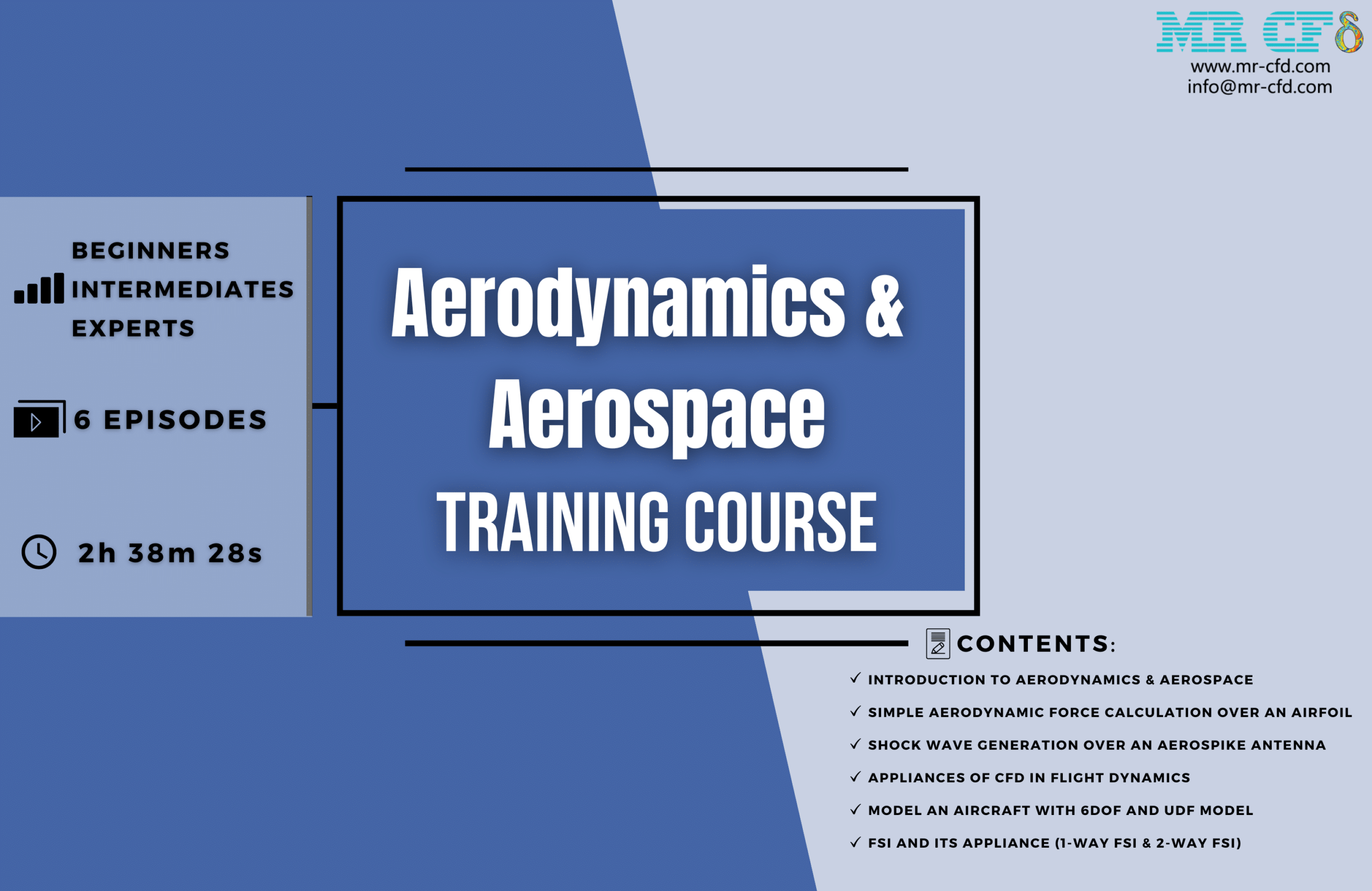


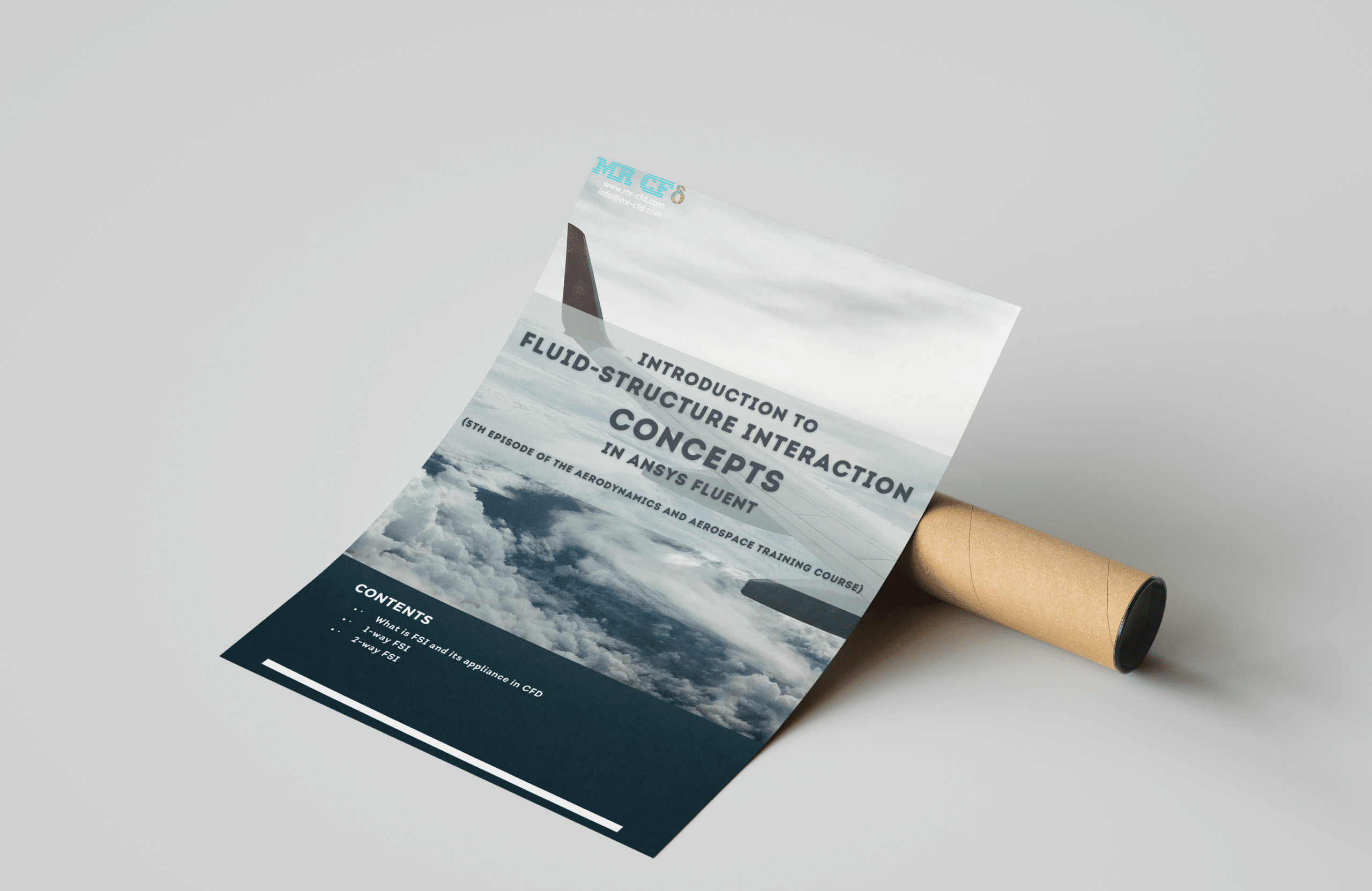
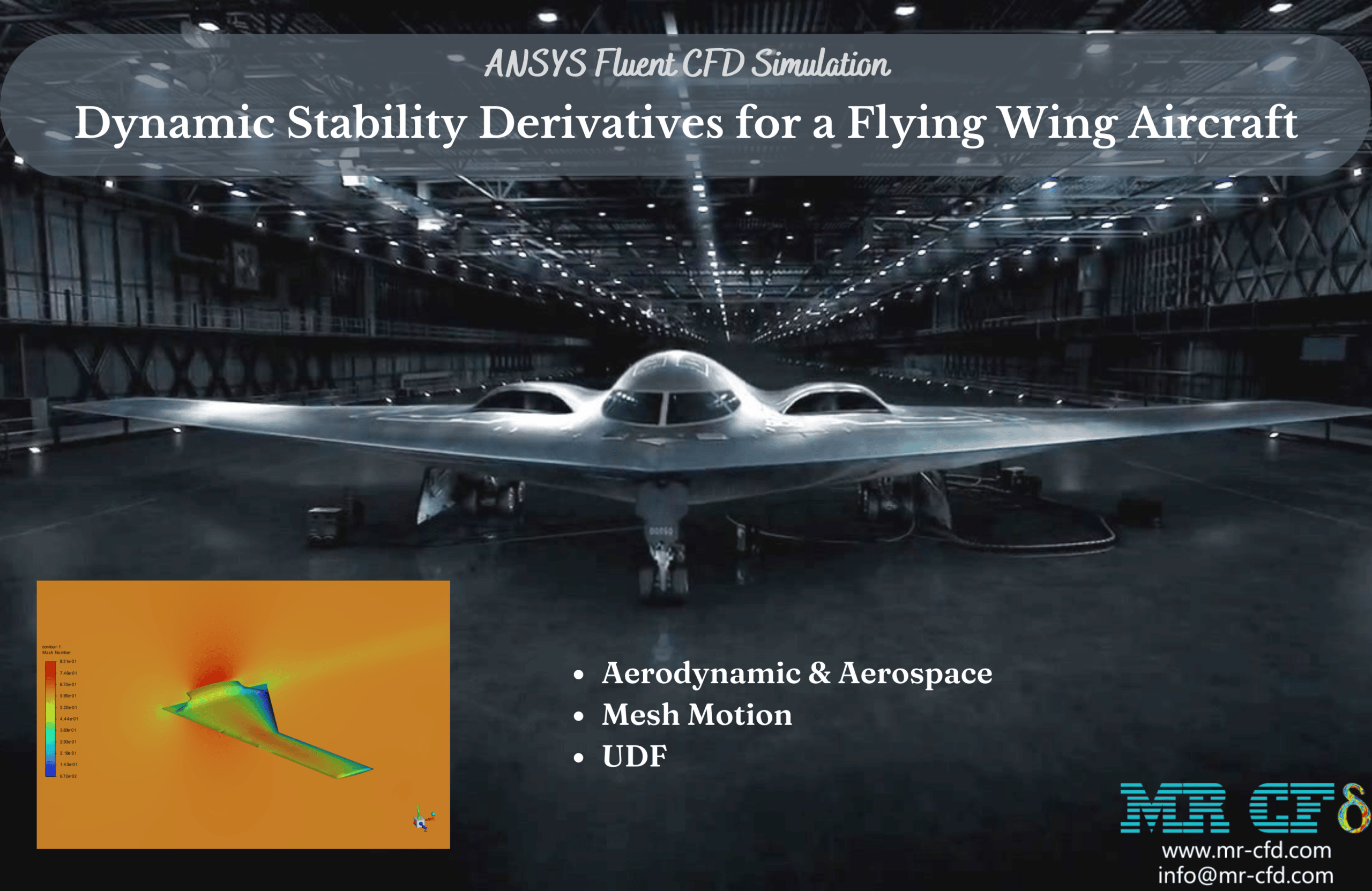
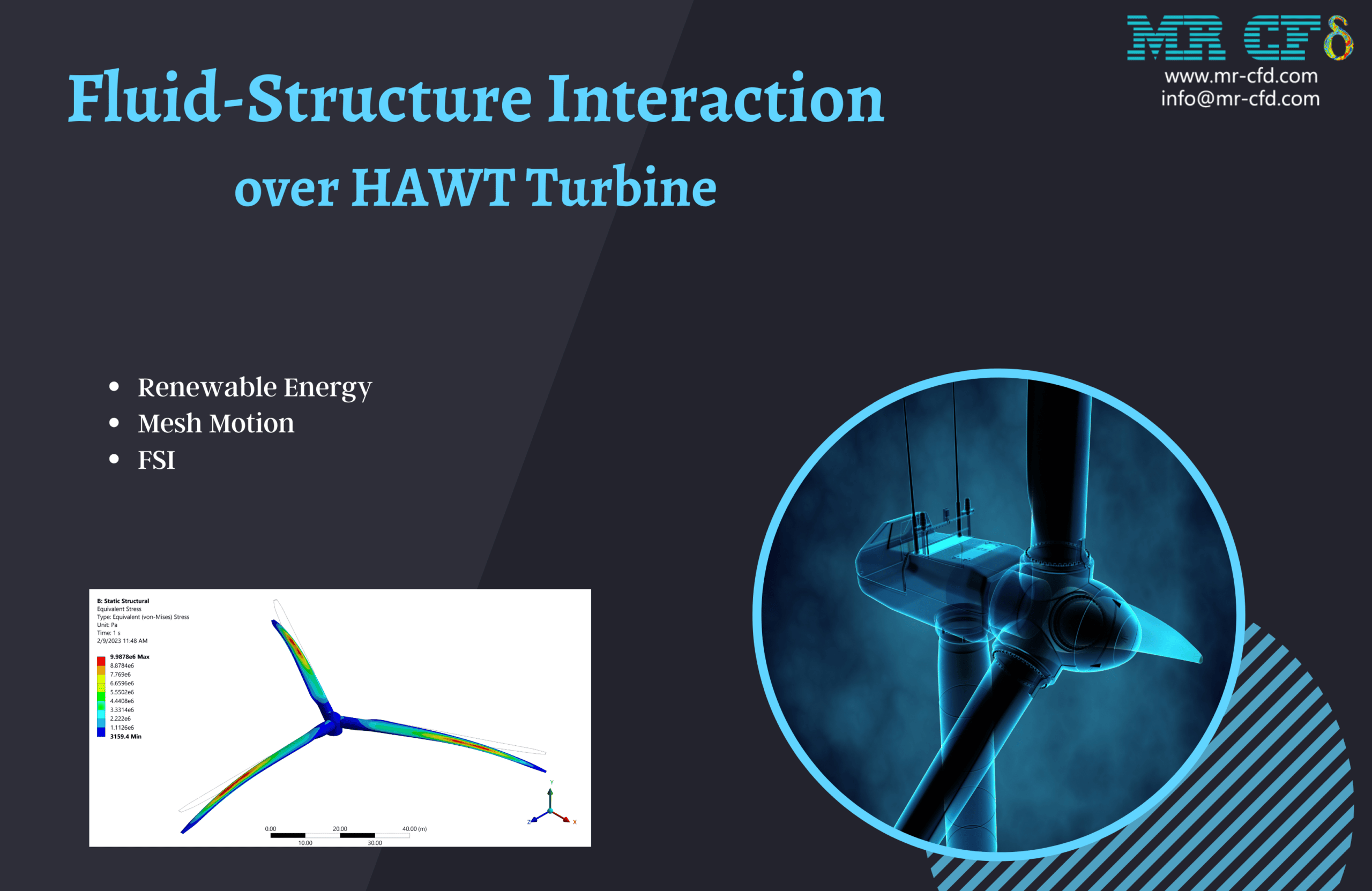
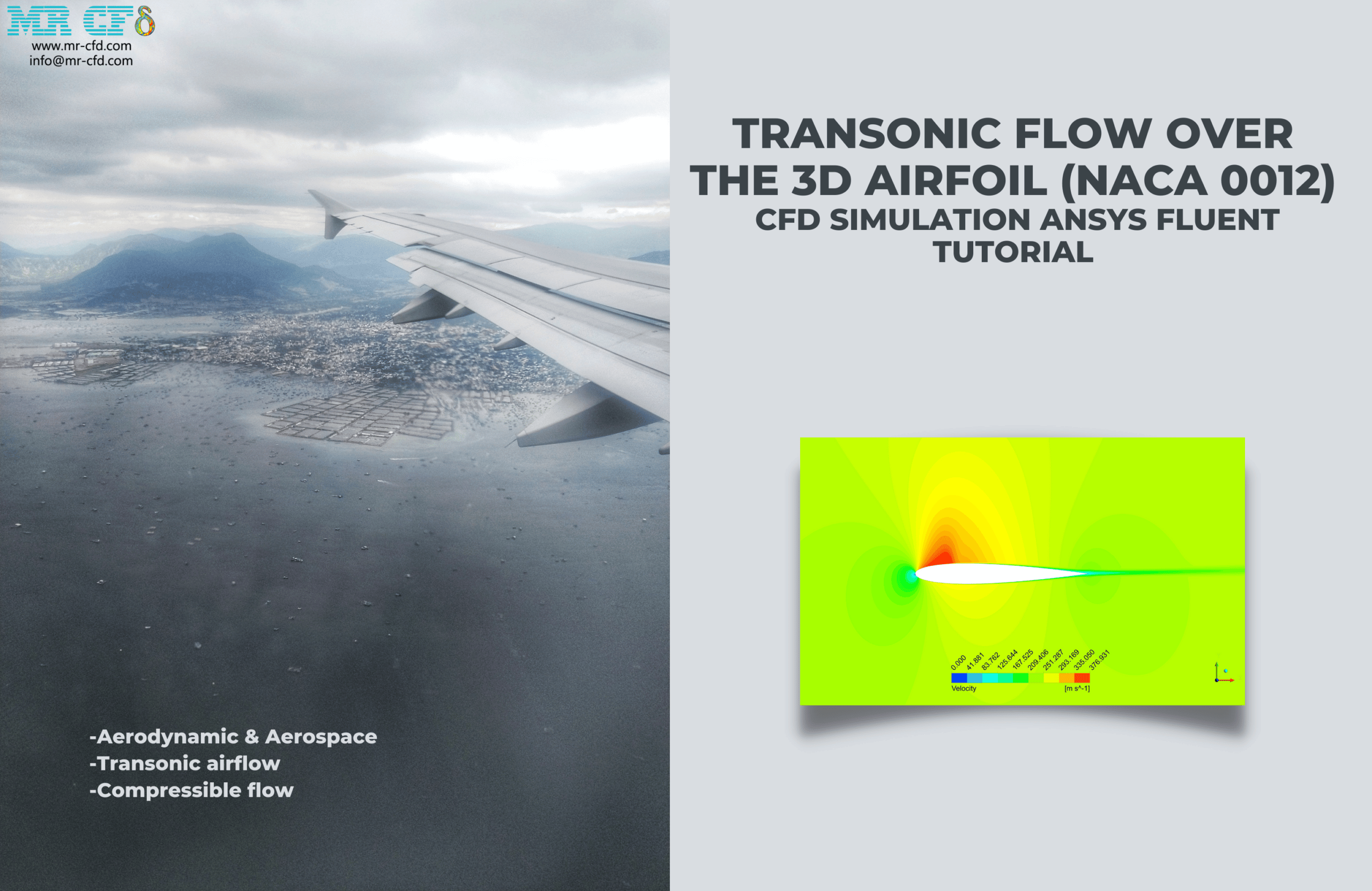
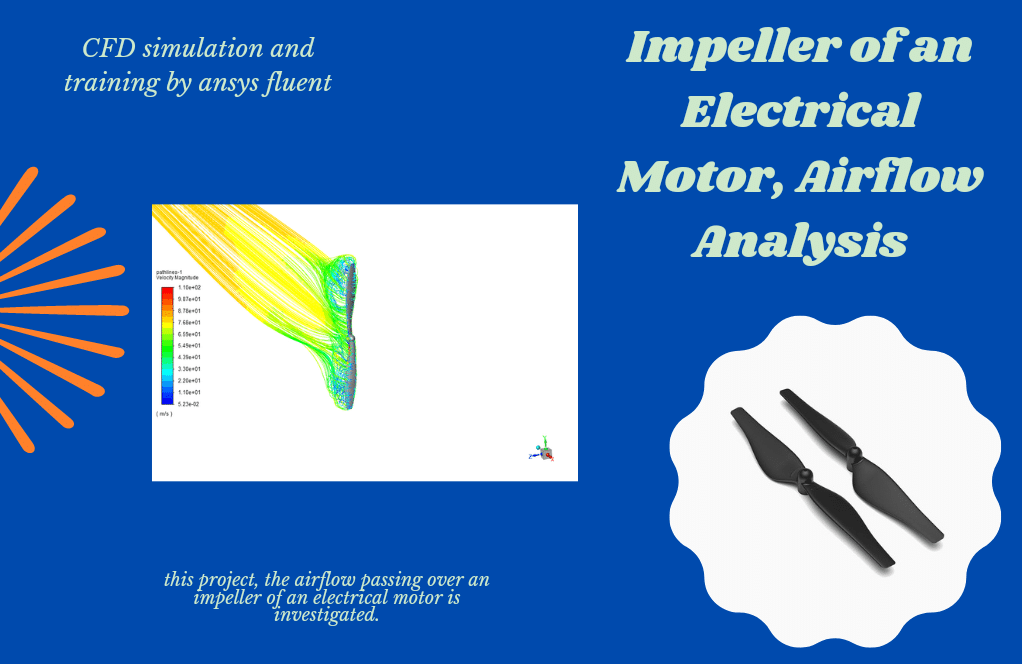
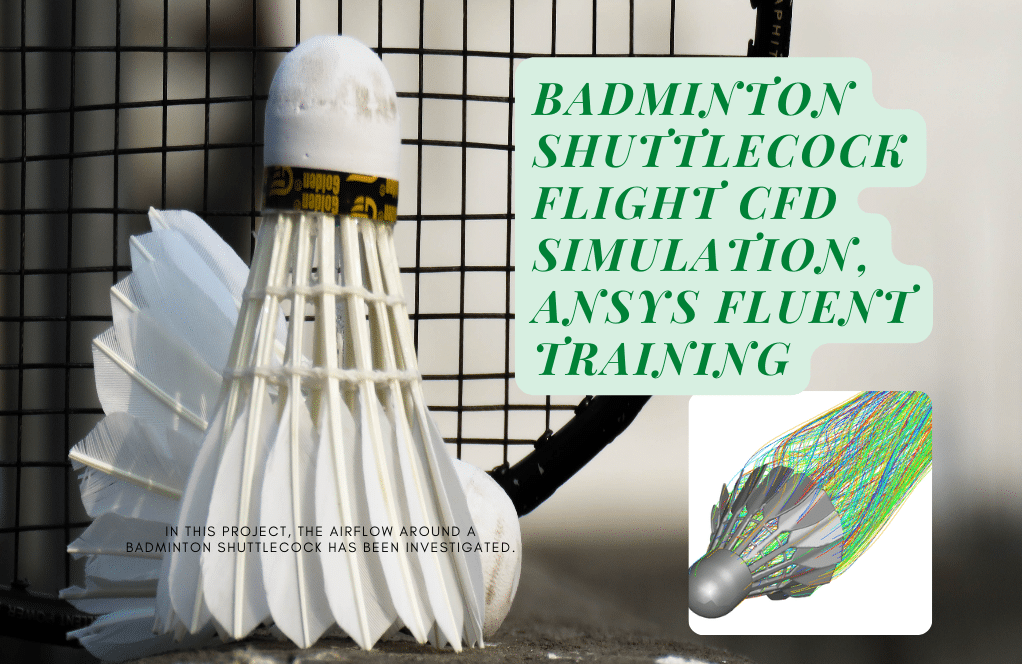

Skye Waelchi –
I’ve recently completed the ‘Aerodynamics and Aerospace Training Course’, and I must say, I’m thoroughly impressed! The way the course is structured, starting from the basic concepts of aerodynamic forces and proceeding to advanced topics like fluid-structure interaction, is impeccable. What struck me most was the practical approach of using ANSYS Fluent for generating aerodynamic coefficients and modeling shock waves – skills that are highly sought after in the aerospace industry. Particularly useful were the lessons on dynamic stability derivatives, which are crucial for aircraft design. The inclusion of lessons on 1-way and 2-way FSI, complete with simulation examples, brought theory and application together perfectly. This course is a must for anyone serious about a career in aerodynamics or aerospace engineering.
MR CFD Support –
Thank you for your kind words and for taking the time to write this comprehensive review. We’re thrilled to hear that the ‘Aerodynamics and Aerospace Training Course’ met your expectations and that you found the curriculum and practical approach beneficial for your career. Your feedback means a lot to us, and we’re glad you found the sections on dynamic stability derivatives and FSI particularly useful. We take great pride in providing our learners with valuable and relevant skills. If you have any further questions or need assistance, please don’t hesitate to reach out. We wish you all the best in your aerodynamics and aerospace engineering endeavors.
Sydnee Hammes –
Just finished the Aerodynamics and Aerospace Training Course and the session on 1-way FSI on a wing was brilliant. Really appreciated the step-by-step guidance through the fluent and Ansys mechanical process.
MR CFD Support –
Thank you so much for your kind words! We’re thrilled to hear that the lesson on 1-way FSI on a wing was helpful and that you found the step-by-step guidance useful. We aim to provide comprehensive and clear instructions to enhance the learning experience. If there’s anything more you’re curious about or any other ways we can assist, feel free to reach out!
Dr. Royce Runolfsdottir –
Just finished the Aerodynamics and Aerospace Training Course from MR CFD. The structured layout of lessons, progressing from aerodynamic concepts to complex simulations like shock waves, and the balance between theory and practical application are impressive. I particularly enjoyed the step-by-step tutorials on dynamic stability and fluid-structure interaction, which will definitely help in my future designs.
MR CFD Support –
Thank you very much for your positive feedback! We are delighted to hear that our Aerodynamics and Aerospace Training Course met your expectations and provided you with valuable insights for your future work. We strive to deliver high-quality and comprehensive educational content that balances theory and practice, and we are glad that you enjoyed the course and found the tutorials useful. If you have further inquiries or require more assistance, please don’t hesitate to reach out.
Prof. Jacques Schimmel III –
I just completed the Aerodynamics and Aerospace Training Course, and I wanted to share my feedback about the course design and content.
MR CFD Support –
Thank you for choosing our Aerodynamics and Aerospace Training Course and for taking the time to provide your feedback. We’re thrilled to hear about your experience. If you have any questions or require further assistance as you continue to apply the knowledge gained, please don’t hesitate to reach out. Your success is our top priority!
Madalyn Adams Sr. –
The training seems comprehensive. Does the course include hands-on projects for practical understanding?
MR CFD Support –
Yes, the Aerodynamics and Aerospace Training Course includes several example projects for readers to simulate various aerospace phenomena and get hands-on experience, enabling practical understanding. Some case studies involve simulating an airfoil, modeling shock waves, oscillation of an aircraft, and executing a 1-way fluid-structure interaction on a wing.
Adelbert Wiza –
The aerodynamics course was incredibly detailed with practical examples that made complex concepts easier to understand! Lesson 2’s hands-on approach to modeling shock waves was fascinating.
MR CFD Support –
We’re so glad to hear you found the Aerodynamics and Aerospace Training Course helpful! It’s great to know the practical examples provided clarity and made the learning process engaging. Thank you for your positive feedback!
Taya Homenick –
I just completed the Aerodynamics and Aerospace Training Course, and I’m blown away by the detailed examples! The lesson on 1-way vs. 2-way FSI was particularly enlightening. Fantastic materials that are both informative and accessible!
MR CFD Support –
Thank you for your wonderful feedback! We’re thrilled to hear that you found the course enlightening, especially on the topic of FSI in aerospace applications. If you need any further insights or assistance, please feel free to reach out. Your success is our priority, and we’re here to support you in your learning journey!
Freeda Nader –
I just finished the Aerodynamics and Aerospace Training Course and it was really insightful! My favorite part was learning about shock wave generation over the aerospike antenna – the examples were very helpful for understanding the concepts.
MR CFD Support –
Thank you so much for your feedback! We’re thrilled to hear you found the shock wave generation section particularly insightful and that the examples helped enhance your understanding. If you have any more questions or need further clarification on any of the topics, feel free to reach out to us.
Paul Kutch I –
I truly enjoyed the Aerodynamics and Aerospace Training Course – the comprehensive curriculum bridges crucial concepts with practical simulation examples. The lessons on dynamic stability derivatives and fluid-structure interaction were particularly enlightening. Kudos to the team for such a well-crafted course!
MR CFD Support –
Thank you for your positive feedback! We’re thrilled to hear that our Aerodynamics and Aerospace Training Course met your expectations and provided valuable insights. Your compliments are greatly appreciated, and we’re glad that you found the lessons on dynamic stability derivatives and fluid-structure interaction to be especially helpful. We look forward to continuing to provide high-quality learning experiences in the future!
Dr. Declan Nolan V –
I just finished the Aerodynamics and Aerospace Training Course from MR CFD Company and I am truly impressed. The detailed explanations of aerodynamic coefficients, shock waves, and dynamic stability derivatives were incredibly insightful. Methods for calculating lift, drag, and moment coefficients were clearly demoed, which made complex concepts much easier to digest. The lessons on shock waves, particularly using a launcher’s antenna, were fascinating. Plus, the section on dynamic stability using CFD provided a strong grasp of Clq, Cnβ, and Cmα derivatives. Model oscillation with UDF and FSI lessons rounded out the course brilliantly. Now I feel much more confident in discussing and applying aerospace CFD in practical applications!
MR CFD Support –
We’re thrilled to hear that you found the Aerodynamics and Aerospace Training Course informative and empowering! Your understanding and appreciation of aerodynamics coefficients, shock waves, and dynamic stability as well as the hands-on simulations using ANSYS Fluent highlight the effectiveness of our course material. Thanks for choosing our training program and for your wonderful feedback!
Janie Grimes –
The aerospace training course overview is excellent! It seems like you really cover everything needed to understand aerospace CFD applications thoroughly.
MR CFD Support –
Thank you so much for the positive feedback on our Aerodynamics and Aerospace Training Course. Our goal is to provide comprehensive knowledge and practical skills for aspiring aerospace engineers and CFD specialists. We appreciate you taking the time to recognize the value of our course content. If there’s any more you’d like to learn or any other way we can assist you, don’t hesitate to get in touch!
Delilah Ebert –
I greatly appreciate the depth and structure of the Aerodynamics and Aerospace Training Course. It covers everything from fundamental aerodynamic principles to advanced simulations with FSI. The progression from concepts to applied examples is tremendously helpful for comprehending complex systems. Thankful for the knowledgeable instructors and well-designed course material.
MR CFD Support –
Thank you for your kind review! We’re thrilled to hear that you found the structure of the Aerodynamics and Aerospace Training Course valuable and that our instructions and materials met your needs. We strive to provide comprehensive and practical learning experiences. If you ever have any questions or need further guidance, don’t hesitate to reach out.
Derrick Cronin Jr. –
The Aerodynamics and Aerospace Training Course was incredible. Not only was I able to grasp the complex subjects, but I’ve come away feeling much more confident in my ability to apply this knowledge practically. The information on shock wave modeling was particularly eye-opening!
MR CFD Support –
Thank you for your kind words! We are thrilled to hear that the Aerodynamics and Aerospace Training Course has augmented your understanding and confidence in these complex topics. Your enthusiasm for modeling shock waves and practical application of the knowledge is inspiring. If you have any further questions or require more in-depth information, please don’t hesitate to ask.
Dr. Ivory Upton Sr. –
An excellent introduction to aerodynamics and aerial vehicle modeling! I was particularly engaged by the hands-on examples, which really helped me understand the complexities of lift, drag, and shock waves. The structured format made the learning curve much more manageable. Kudos to MR CFD for crafting such an insightful course!
MR CFD Support –
Thank you for your thoughtful review! We are thrilled to hear that our Aerodynamics and Aerospace Training Course provided you with a clear and structured understanding of the concepts. If you ever have any questions or wish to further your knowledge, feel free to reach out. Your success is our top priority!
Nina Harris –
Just completed the Aerodynamics and Aerospace Training Course – the depth of knowledge was amazing, and the examples provided were incredibly insightful. The hypothetical case studies closely mirrored real-world scenarios and have given me the confidence to apply these CFD techniques in my future projects. Cheers to the MR CFD team for such a well-structured course!
MR CFD Support –
We greatly appreciate your positive feedback! It’s wonderful to hear that you found the Aerodynamics and Aerospace Training Course to be thorough and engaging. We’re delighted that the cases studies enhanced your learning experience and that you feel prepared to utilize CFD in your work. Thank you for choosing MR CFD Company’s learning products, and we look forward to supporting your future endeavors!
Arlene Kiehn –
The Aerodynamics and Aerospace Training Course was incredible! I was particularly impressed with how comprehensive Lesson 2 was. It provided clear examples that made understanding the calculation of lift, drag, and shock wave generation quite intuitive. Can’t wait to apply these principles in real-world simulations!
MR CFD Support –
Thank you for your kind review! We’re thrilled to hear that Lesson 2 on Lift, Drag, and Shock Wave Generation was especially helpful for you. It’s great to know that our examples are making aerodynamic principles easier to grasp and translate into practice. If you ever have any questions or need further assistance with your real-world simulations, don’t hesitate to reach out. Looking forward to helping you succeed in your aerospace projects!
Kaylie Bogisich –
I recently completed the Aerodynamics and Aerospace Training Course. The modules were incredibly informative. I was particularly impressed with Lesson 2, where I could simulate the shock wave generation over an aerospike antenna. The course’s step-by-step approach in teaching how to model and calculate dynamic stability derivatives in Lesson 3 provided me a sound understanding of important concepts in aerospace engineering.
MR CFD Support –
Thank you for sharing your positive experience with our Aerodynamics and Aerospace Training Course! We are thrilled to hear that you found Lesson 2 on shock wave simulation and Lesson 3’s coverage of dynamic stability derivatives particularly helpful. We look forward to assisting you in any further learning endeavors you may have in aerospace and aerodynamics. Should you have any more questions or need additional resources, please don’t hesitate to reach out.
Prof. Jeffrey Zboncak V –
I recently finished the Aerodynamics and Aerospace Training Course offered by MR CFD and found the material to be highly enlightening, especially how it was broken down into comprehensible sections, from the basics of generating aerodynamic coefficients and shock waves to the more complex fluid-structure interaction concepts. I’m quite impressed with how practical examples were blended with the theory to provide a deeper understanding of the concepts. Kudos to the team for such a well-structured course!
MR CFD Support –
Thank you for your positive feedback on the Aerodynamics and Aerospace Training Course! We’re thrilled to hear that the course material was clear and that the structured approach helped deepen your understanding of key concepts in aerodynamics and aerospace. It’s always our intention to blend theory with practical, real-world examples to provide comprehensive learning. We appreciate your compliments and are glad you enjoyed the course! If you have any inquiries about further studies or other courses, please let us know!
Dr. Kristian Schuppe V –
The Aerodynamics and Aerospace Training Course was very well-organized. Knowledge about aerodynamic forces and shock wave generation has greatly improved my understanding of aerospace applications. The material on Dynamic stability derivatives was intriguing!
MR CFD Support –
Thank you for your kind words! We’re delighted to hear that the Aerodynamics and Aerospace Training Course met your expectations and enhanced your understanding. It’s great to know our efforts to provide comprehensive and clear course material are appreciated.
Laron Schmeler –
This course covers a wide range of essential topics! Was there a particular lesson or concept within this course that you found more challenging or intriguing?
MR CFD Support –
Thank you for the compliment! We’re happy to hear that you appreciated the variety of topics in our Aerodynamics and Aerospace Training Course. It is quite comprehensive, and we strive to present each concept clearly to make even the most complex topics understandable. If you ever need further clarification or if curiosity strikes on any lesson, feel free to reach out!
Dr. Linnea Hauck –
I completed the Aerodynamics and Aerospace Training Course and the detailed structure really helped me grasp difficult concepts. The example simulations, like the one-way FSI on a wing, were especially illuminating!
MR CFD Support –
Thank you for your kind words! We’re thrilled to hear that our course structure and practical examples were helpful in enhancing your understanding of aerodynamics. Your success is the best testament to the quality of our training materials.
Dr. Garrett Lowe –
Just finished the Aerodynamics and Aerospace Training Course and couldn’t be happier with the depth of content covered. The examples were clearly demonstrated, and the step-by-step instructions made it easy to understand complex concepts like dynamic stability derivatives and FSI in aerospace modeling. Brilliant course!
MR CFD Support –
We’re thrilled to hear that the course met your expectations and helped you to understand the complex concepts within aerodynamics and aerospace CFD simulations. Thank you for choosing our course and for sharing your positive feedback!
Tremayne Sauer –
I just finished the Aerodynamics and Aerospace Training Course and I’m amazed how it covered everything from basic concepts to advanced modelling, including shock wave generation. The hands-on examples were so helpful for understanding the complex theories.
MR CFD Support –
We’re thrilled to hear that the Aerodynamics and Aerospace Training Course met your expectations and provided a comprehensive learning experience! Your feedback on how the hands-on examples helped bridge the gap between theory and practical application is greatly appreciated. Thank you for sharing your positive experience!